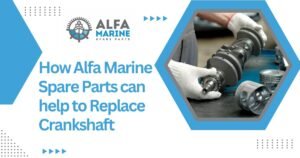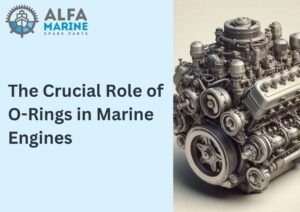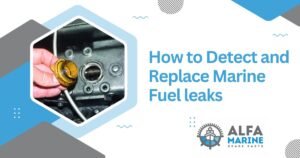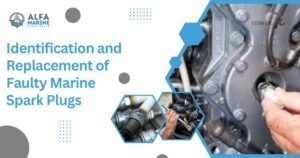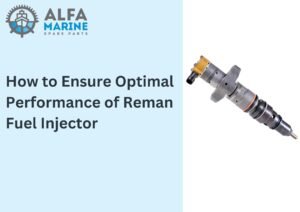Whether you are operating a small boat or a cargo ship, an uninterrupted power supply is essential to support mobility and onboard electrical installations. This is why a marine generator alternator has extra security features compared to an automobile alternator. Marine alternators supply direct current (DC) for multiple electrical applications.
This blog post highlights the role of an alternator in a ship and the working principle of the device.
What are Marine Alternators?
A marine alternator is an electro-mechanical equipment for producing alternating current (AC) and transforming this power into direct current (DC). The device works with the prime mover to regulate the generator system for the electricity supply on board.
Marine alternators boast enhanced water resistance and safety features (ignition proof) to work in salt-water conditions. It addresses specific power supply requirements in the engine room. This critical device supplies direct current to the electrical systems connected to the engines on a watercraft. The equipment produces high amperage current with low voltage to safeguard the motor winding from mechanical stress and overheating.
Functions of an Alternator in Marine Vessels
A marine alternator (comprising a rotor and a stator) is an integral part of the generator set used to produce power from fuel.
Firstly, the chief function of an alternator on a watercraft is to convert mechanical energy (produced during combustion in the engine) into electrical current. However, this generator part can serve diverse inboard applications.
Secondly, the alternator protects the engine from damage due to excessive noise and heat produced during repetitive combustion cycles. It extracts heat and noise from the engine to convert this energy into usable electrical energy.
Thirdly, it also streamlines the power supply to the propulsion system when the main engine stops working.
Marine Alternators – Understanding Basic Working Principle
Considering the flexibility offered, it is possible to integrate a marine alternator into a propeller shaft, main engine, or auxiliary engine.
An alternator comprises an arrangement of a rotor and a stator. This arrangement in marine alternators can be of two types:
#1. A moving stator with a static rotor
#2. A stationary stator with a moving rotor (for heavy-duty alternators)
In alternators with moving rotors and static stators, the rotor is positioned between the stators. The stator is connected to three-phase windings. This design features a shaft fan and slip rings connected to the rotor to cool the windings. When using the alternator with the main engine, it is necessary to integrate a gearbox into the arrangement to regulate constant speed.
The prime mechanism in electricity generation comprises a rotating coil exposed to a magnetic field. This action produces alternating current with fluctuating values. Slip rings fixed with carbon brushes are used to gather this form of current from the rotating coil. Alternators in ships and boats work on this wire wound technology to generate AC electricity inboard.
Depending on the need, there can be multiple electromagnets and poles (connected to an output medium) in a ship alternator. This is essential for producing more power for heavy-duty ships and cargo vessels.
Buy Genuine Marine Alternators Online from Top Brands
Alfa Marine Spare Parts is one of the prime suppliers of alternators for boat and ship generators. Visit our product catalogue to explore the extensive range of alternators for diverse energy output needs. Contact us if you have questions about marine engines and spare parts.


